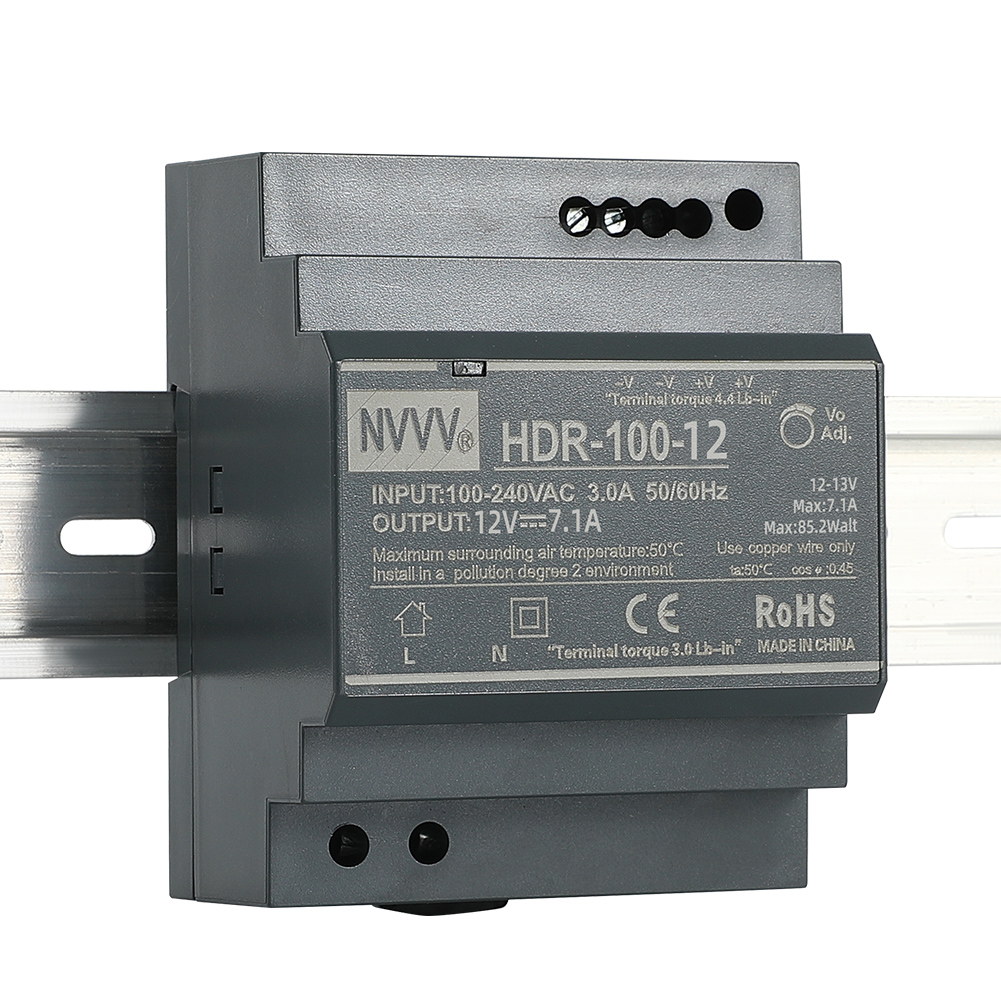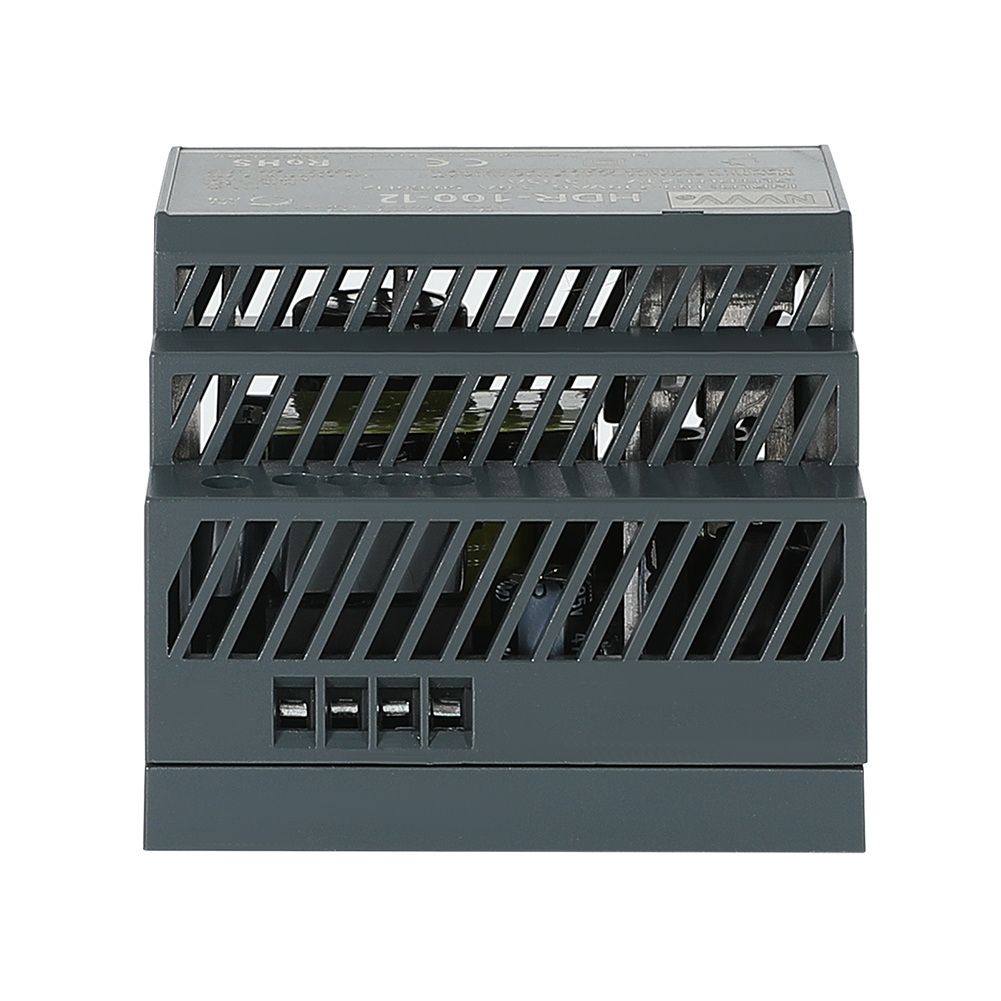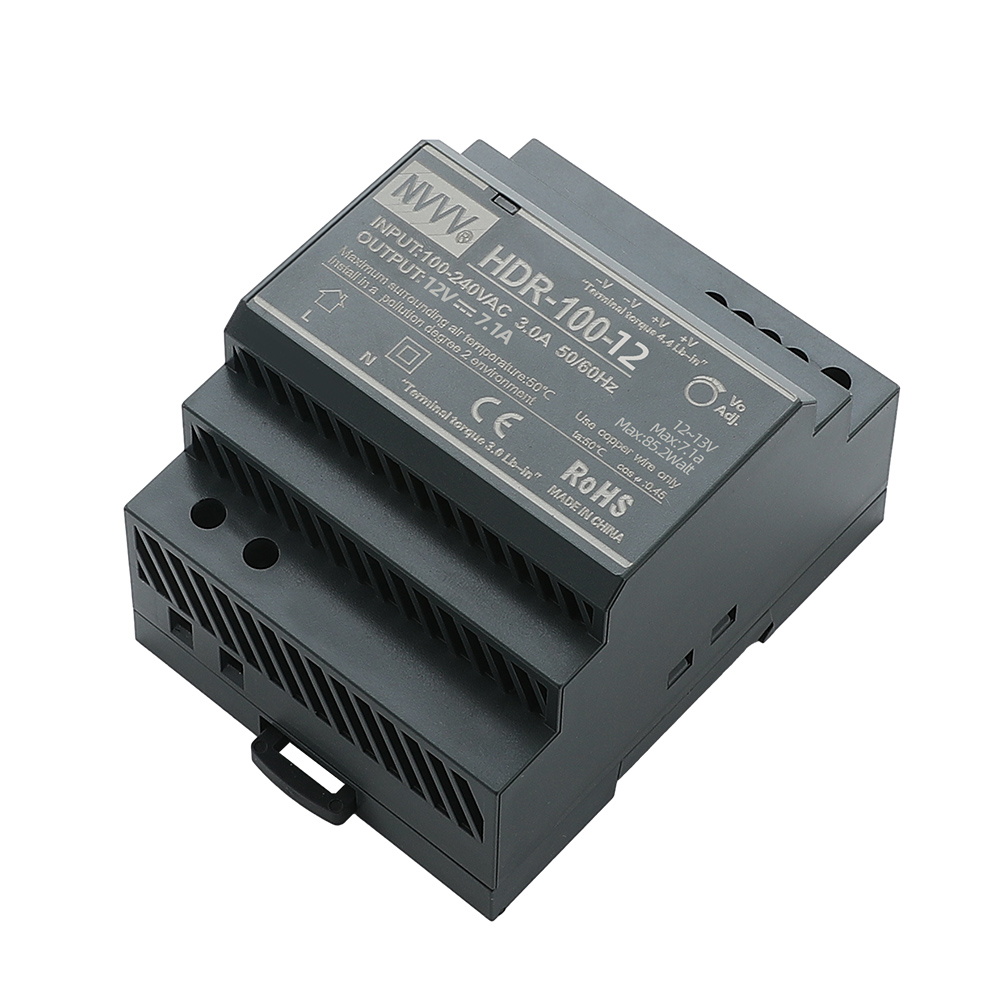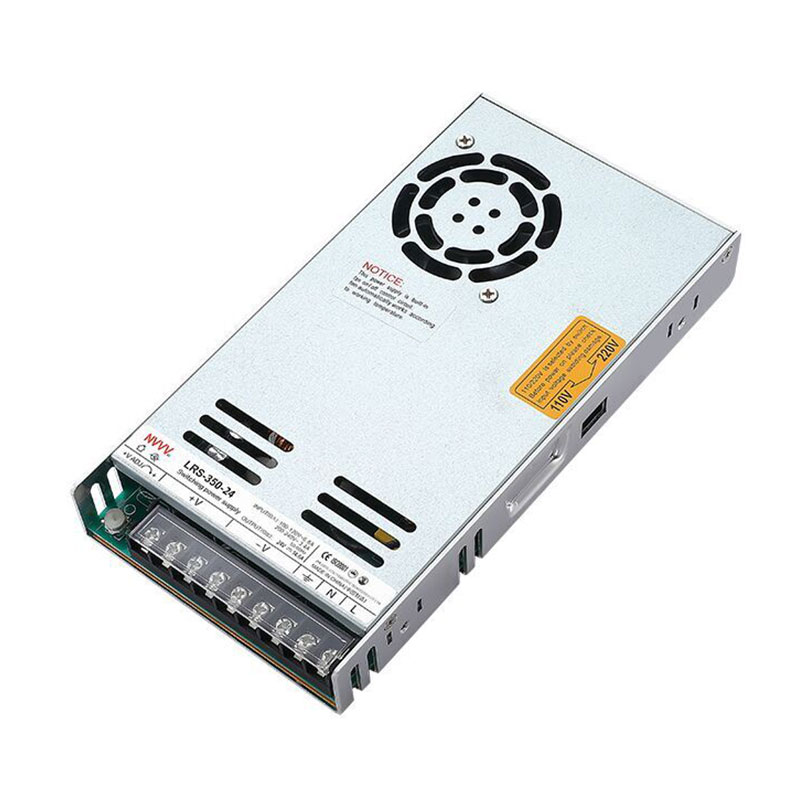What Are the 3 Types of Power Supply?
Power supplies are an integral part of modern electronic devices, from home entertainment systems to industrial applications. Different types of power supplies have significant differences in working principles and application scenarios. Understanding these differences can help you choose the most appropriate power supply and improve device performance and reliability.
What Are the 3 Types of Power Supply and Its Difference?
Power supplies are a vital part of electronic devices, providing the necessary power to drive circuits and devices. There are three common types of power supplies: linear power supplies, switching power supplies, and uninterruptible power supplies (UPS). Each type has its own unique working principle, advantages and disadvantages, and application scenarios.
1. Linear Power Supply
Linear power supply is a traditional power supply that reduces the alternating current voltage (AC) to the required direct current voltage (DC) through a transformer, and then converts it into a smooth DC output through rectification and filtering circuits. The characteristics of linear power supplies are very stable output voltage and low noise, which are suitable for devices that are sensitive to power supply noise, such as audio equipment, laboratory instruments, etc.
Advantages:
Stable output voltage and low noise.
Simple design, easy to implement.
Good transient response, suitable for dynamic loads.
Disadvantages:
Low efficiency, especially when high current output, large energy loss.
Large volume and weight, because large transformer and heat sink are required.
More heat is generated, and good heat dissipation design is required.
2. Switching Power Supply
Switching mode power supply is a more efficient power supply that converts input AC or DC power into the required DC voltage through high-frequency switching. It uses pulse width modulation (PWM) technology to quickly switch switching elements (such as MOSFET) to make energy transfer more efficient.
Advantages:
High efficiency, usually above 80%, saving energy.
Small size, light weight, easy to carry and install.
Wide output voltage range, can adapt to various load requirements.
Disadvantages:
Complicated circuit design and high manufacturing cost.
The output noise is high and filtering measures are required.
Sensitive to external interference, good shielding and grounding design is required.
3. Uninterruptible Power Supply (UPS)
An uninterruptible power supply is a special type of power supply that is mainly used to provide backup power when the main power fails. UPS usually contains batteries, inverters and control circuits. When the main power is interrupted, it can immediately switch to battery power to ensure uninterrupted operation of the equipment.
Advantages:
Provide reliable backup power to ensure the continuous operation of key equipment.
Equipped with voltage regulation function to improve power quality.
Protect equipment from power fluctuations, surges and power outages.
Disadvantages:
High cost, especially for UPS systems with long power supply.
Requires regular maintenance and battery replacement.
Large size, complex installation and management.
In summary, linear power supplies are suitable for occasions requiring low noise and high stability; switching power supplies are widely used in various electronic devices due to their high efficiency and small size; and uninterruptible power supplies are an important means to ensure the continuous operation of key equipment. Choosing the appropriate power supply type depends on the specific application requirements and environmental conditions.
How Does the 3 Types of Power Supply Work?
Understanding the working principles of the three types of power supplies will help us better select and use these devices in practical applications. The following are the detailed working principles of linear power supplies, switching power supplies, and uninterruptible power supplies.
1. Working Principle of Linear Power Supply
Linear power supplies convert AC power to DC power through the following steps:
Transformer step-down: First, the transformer reduces the input high-voltage AC power (such as 220V) to a lower AC voltage (such as 12V).
Rectification: The AC power after voltage reduction passes through a rectifier circuit (such as a bridge rectifier) to convert the AC power into pulsating DC power.
Filtering: The pulsating DC power passes through a filter circuit (such as a capacitor) to smooth it into a more stable DC power.
Voltage regulation: Finally, the voltage stabilization circuit (such as a linear regulator) further regulates the DC power to the required output voltage to ensure voltage stability.
The core of the linear power supply lies in the voltage regulator, which works similarly to a variable resistor. By adjusting the resistance value, the output voltage is maintained constant. Since the linear regulator consumes part of the electrical energy and converts it into heat, the efficiency is low.
2. Working principle of switch mode power supply
SMPS realizes efficient energy conversion through high-frequency switching technology, and its working process is as follows:
Rectification and filtering: First, the input AC power is converted into DC power through rectification and filtering circuits.
High-frequency switching: DC power is converted into high-frequency AC power by high-frequency switching elements (such as MOSFET) at high frequency (such as tens of kilohertz).
Transformer transformation: High-frequency AC power is converted into the required voltage level through a high-frequency transformer.
Rectification and filtering: The high-frequency AC power output by the high-frequency transformer is converted into stable DC power through rectification and filtering circuits again.
Feedback control: The output voltage is monitored by the feedback circuit, and the duty cycle (PWM) of the high-frequency switch is adjusted to ensure the stability of the output voltage.
The high efficiency of the switching power supply comes from the high-frequency switching technology, which reduces the energy loss in the voltage stabilization process. However, due to the high-frequency operation, higher electromagnetic interference (EMI) will be generated, requiring additional filtering and shielding measures.
3. Working principle of uninterruptible power supply
The main function of uninterruptible power supply is to ensure the continuity of power supply. Its working principle is as follows:
Normal power supply mode: When the mains power is normal, UPS will provide stable power to the load equipment through rectification and filtering circuits, and charge the internal battery at the same time.
Battery power supply mode: When the mains power fails or fluctuates, UPS will immediately switch to battery power supply mode. The battery converts DC power into AC power through the inverter and continues to power the load equipment.
Conversion mechanism: There is a fast conversion mechanism inside the UPS to ensure that when the mains power fails, it can seamlessly switch to battery power within milliseconds to avoid equipment being affected.
Protection and monitoring: UPS also has a variety of protection functions, such as overvoltage, undervoltage, short circuit and overload protection, to ensure the safe operation of the equipment. At the same time, UPS is equipped with a monitoring system that can monitor the battery status and mains power conditions in real time, and provide alarms and maintenance prompts.
The core of uninterruptible power supply lies in its fast response and high reliability. It is suitable for occasions with high requirements for power continuity, such as data centers, hospitals and communication systems.
In summary, linear power supplies achieve stable power supply through transformers and voltage regulators; switching power supplies use high-frequency switching technology to improve efficiency; uninterruptible power supplies ensure uninterrupted power through batteries and inverters. Understanding these principles can help us better select and apply suitable power supplies.
Does a 500W Power Supply Always Draw 500W?
Many people are concerned about whether a 500W power supply always draws 500W of power. The answer is no. The actual power consumption of the power supply depends on the load requirements of the connected device. Here is a detailed explanation.
1. Rated power and actual power consumption
The 500W rated power of the power supply is its maximum output capacity, indicating that it can provide 500W of power under maximum load. However, the actual power consumption of the power supply is directly related to the connected load. For example, if the device you connect only requires 200W of power, the power supply will only consume slightly more than 200W of power.
2. Efficiency and energy loss
Power supplies are not 100% efficient. There are certain losses in the energy conversion process, which usually manifests as heat. For example, a power supply with an efficiency of 80% may actually consume 250W of electricity when outputting 200W of power (200W / 0.8 = 250W), of which 50W is lost as heat.
3. Standby power consumption
Many power supplies still consume a small amount of power when in standby mode. This standby power consumption is usually low, but it will also accumulate over a long period of time. For example, a modern high-efficiency power supply may only consume 1-2W of electricity when in standby.
4. Load characteristics
The power consumption of a power supply will change with the load. Most power supplies are less efficient at light loads and most efficient at medium loads (usually 40%-70% of their rated power). For example, a 500W power supply may show the best efficiency at a 250W load, but the efficiency may be reduced at a 50W load.
5. Power management
Some advanced power supplies are equipped with power management functions, which can dynamically adjust the power consumption according to the load requirements. For example, a computer power supply can reduce power consumption when the system is idle and increase power consumption when it is under high load (such as running large applications or games). This dynamic adjustment helps save energy and improve the overall efficiency of the system.
6. Power consumption examples in real applications
In real applications, the power consumption of different devices varies greatly. For example:
Personal computers: In standby mode, the power consumption of a PC may be only 10-20W; during light use (such as browsing the web), the power consumption is about 50-100W; during high load (such as playing games or video editing), the power consumption may reach 300W or even higher. If a PC uses a 500W power supply, its actual power consumption when browsing the web is much lower than 500W.
Home appliances: For example, TVs, refrigerators, sound systems, etc., the power consumption varies with usage. For example, a refrigerator consumes more power when the compressor is running and less power when it is in standby.
In summary, the actual power consumption of a 500W power supply depends on the needs, efficiency and load of the connected devices. Understanding these factors can help us better manage energy consumption and choose the right power supply to achieve energy saving and efficient operation.
Conclusion
Mastering the working principles and practical applications of different types of power supplies can make more effective use of them and ensure the stable and efficient operation of the equipment. Whether it is the stability of linear power supplies, the high efficiency of switching power supplies, or the continuous power supply capability of uninterruptible power supplies, understanding and applying this knowledge will make your electronic system perform better.










